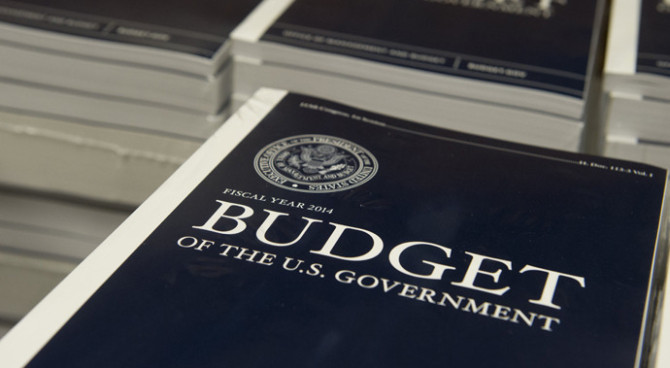While deficit projections have recently moderated, the cost of servicing the national debt will explode once interest rates begin to rise.
A version of this article appeared May 22, 2013, on page A15 in the U.S. edition of The Wall Street Journal, with the headline: The Debt Problem Hasn’t Vanished.
By Phil Gramm and Steve McMillin
President Obama has raised the national debt by nearly $6.2 trillion, the equivalent of $78,385 per family of four. It is true that projected deficits recently have been reduced. April tax filings increased 28% from 2012, but much of this was thanks to a one-time rush at the end of 2012 to report income before rates rose in January. The second largest reduction in the deficit came from Fannie Mae taking a one-time accounting adjustment.
But unless the economy soars, or a significant budget agreement is reached, the most lasting legacy of the Obama presidency will be a $10 trillion increase in the national debt—a burden that bodes ill for the nation’s future.
Once the Federal Reserve’s easy-money policy comes to an end and interest rates return to their post-World War II norms, the cost of servicing this debt will explode. The cost will increase further as the Fed sells down its $1.85 trillion holding of government bonds, and the Social Security system runs deeper and deeper into the red. The Treasury will then have to pay interest on an ever-growing percentage of the debt.
Since the World War II era, the average maturity of outstanding federal debt has been about five years, and the average interest cost on a five-year Treasury note has been 5.9%. At this interest rate, the expected cost of the Obama debt burden will eventually approach some $590 billion per year in perpetuity, exceeding the current annual cost of any federal program except Social Security.
An America forever burdened by massive government debt would have been unthinkable for much of the nation’s history. Beginning with the Revolutionary War, the pattern has been that federal debt increased to help finance the nation’s armed conflicts. But government spending after the wars dropped and debt was paid down, or even paid off, as under President Andrew Jackson in 1835.
Federal borrowing during the Civil War reached nearly $2.8 billion, about 30% of GDP. Thereafter the government ran surpluses and redeemed U.S. bonds that served as the reserve base of national banks and literally burned U.S. paper currency—greenbacks—in the furnace of the Treasury building. The money supply fell and federal spending plummeted to $352 million in 1896 from $1.3 billion in 1865.
These are policies that horrify modern Keynesian economists. Yet over that late 19th-century period real GDP and employment doubled, average annual real earnings rose by over 60%, and wholesale prices fell by 75%, thanks to marked improvements in productivity.
With the onset of the Great Depression, the national debt increased dramatically for the first time in the peacetime history of America, reaching 43% of GDP in 1938. World War II meant more borrowing. Since 1930, there has been no concerted effort to pay down the national debt. Any reductions in the national debt relative to the GDP have been almost solely the result of economic growth and inflation.
As the debt burden rises, so too does the cost of servicing the debt increase as a share of the growth the economy is capable of generating. When the debt on which interest is paid equals the GDP level of a nation, the economy must grow faster than the interest rate to avoid debt-servicing costs consuming all the benefit of economic growth. A nation then begins to lose its ability to grow its way out of a mounting debt crisis. Its options start to narrow down to forced austerity, inflation or default.
Today the total U.S. federal debt is 103% of GDP. Since interest paid to the Fed, the Social Security system and other government pension funds is effectively rebated to the Treasury, taxpayers currently bear only the burden of interest on 60% of this debt. But the size of the debt and the percentage of the debt on which interest will have to be paid are rising.
Some seek solace in the fact that at the end of World War II, the national debt exceeded GDP and still the economy prospered. But when the war ended, federal spending dropped to $29.8 billion in 1948 from $92.7 billion in 1945. Spending as a percentage of GDP fell to 12% from 44%. The U.S. emerged from the war as the world’s dominant producer of goods and services. The demand for dollars around the world was insatiable, and a long period of record prosperity ensued. High GDP growth and inflation eventually brought down the debt-to-GDP ratio.
Americans today face a totally different situation. Spending and huge deficits continue unabated, and growth rates have declined since the recovery began four years ago. The reduction in government spending that occurred following World War II would be politically impossible today short of a cataclysmic crisis. Under Mr. Obama, the government has run trillion-dollar deficits for four consecutive years, and the top marginal tax rate today is already higher than it was when the budget was balanced in fiscal year 2001.
The president and many in Washington are complacent because, thanks to the Fed’s unprecedented near-zero interest rate policy, the burden of servicing the debt today is just 0.9% of GDP, the lowest level in over five decades. But this cannot last, and the Fed is already looking for an exit plan.
Sadly, nations generally discover the truth of Albert Einstein’s dictum that compound interest is the most powerful force in the universe—not through the happy accumulation of wealth but through the agonizing enslavement of debt.
Mr. Gramm, a former Republican senator from Texas, is senior partner of U.S. Policy Metrics, where Mr. McMillin, a former deputy director of the White House Office of Management and Budget, is a partner.



